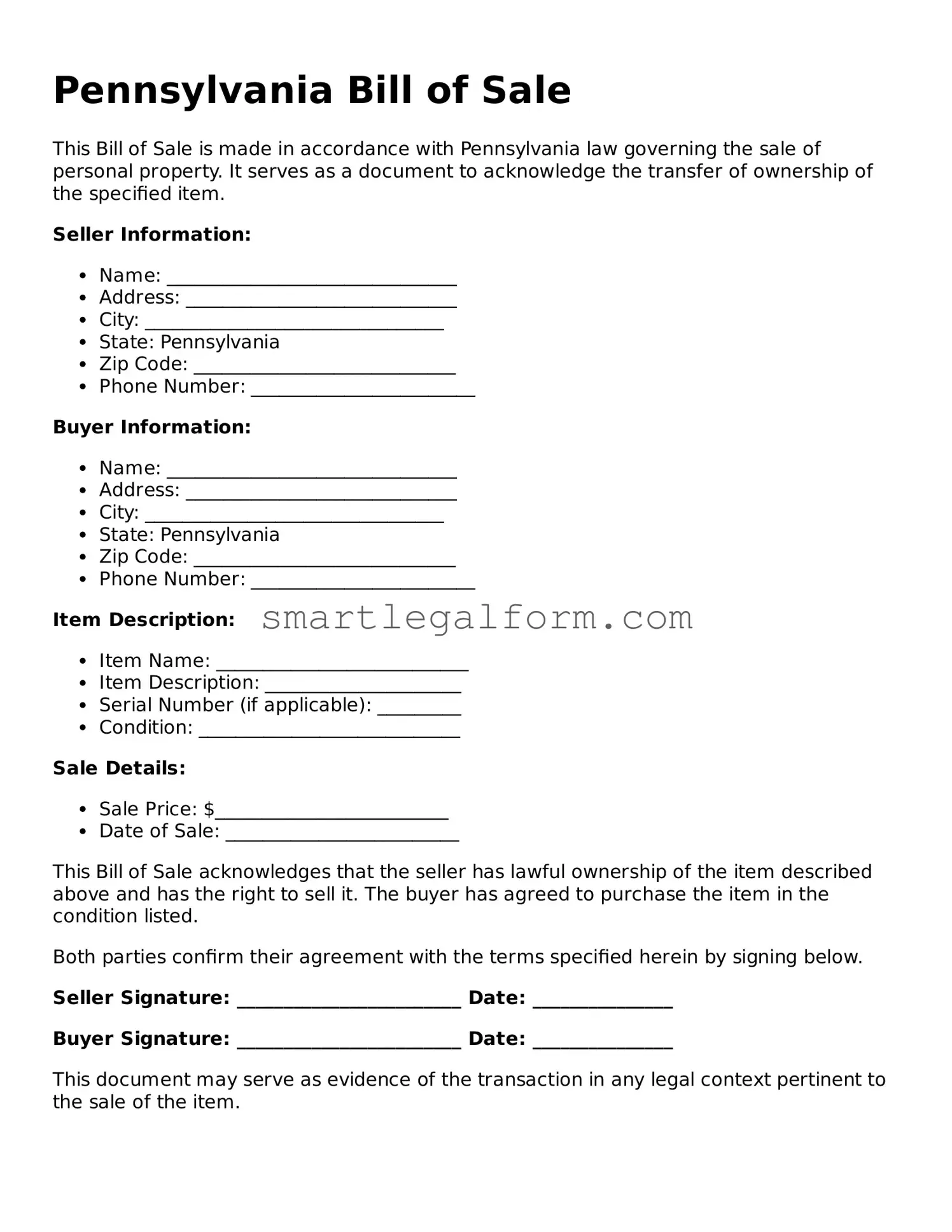Pennsylvania Bill of Sale
This Bill of Sale is made in accordance with Pennsylvania law governing the sale of personal property. It serves as a document to acknowledge the transfer of ownership of the specified item.
Seller Information:
- Name: _______________________________
- Address: _____________________________
- City: ________________________________
- State: Pennsylvania
- Zip Code: ____________________________
- Phone Number: ________________________
Buyer Information:
- Name: _______________________________
- Address: _____________________________
- City: ________________________________
- State: Pennsylvania
- Zip Code: ____________________________
- Phone Number: ________________________
Item Description:
- Item Name: ___________________________
- Item Description: _____________________
- Serial Number (if applicable): _________
- Condition: ____________________________
Sale Details:
- Sale Price: $_________________________
- Date of Sale: _________________________
This Bill of Sale acknowledges that the seller has lawful ownership of the item described above and has the right to sell it. The buyer has agreed to purchase the item in the condition listed.
Both parties confirm their agreement with the terms specified herein by signing below.
Seller Signature: ________________________ Date: _______________
Buyer Signature: ________________________ Date: _______________
This document may serve as evidence of the transaction in any legal context pertinent to the sale of the item.
